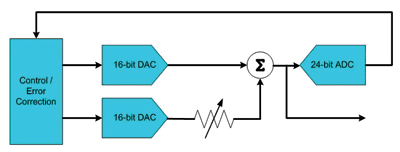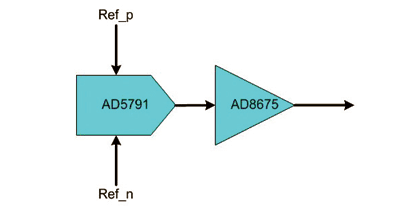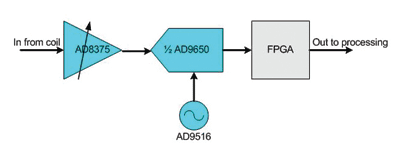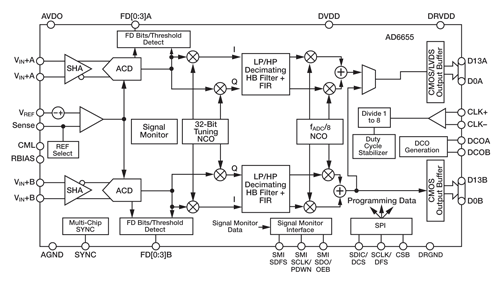Improving MRI images, easing the design task
Continuing advances in IC technology is making these tasks easier and promises additional benefits in the future
BY JIM SCARLETT
Systems Engineer, Analog Devices’ Healthcare Group
Norwood, MA
www.analog.com
The demands of growth industries such as wireless infrastructure have had a substantial impact on the performance of modern integrated circuits. Much of the time, this has meant a gradual evolution toward higher-performing devices, or more highly integrated ones. Interestingly, improvement of this nature often benefits largely unrelated industries as well.
For example, magnetic resonance imaging (MRI) scanners often benefit from advances in other industries while usually having little influence on IC development themselves. This dynamic has resulted in tremendous changes in MRI system design that offer the chance for improved performance of various subsystems while easing the task of the designers.
An example of a subsystem that benefits from modern ICs is the gradient control. A high-end MRI scanner requires control of the gradient field with precision, accuracy, and stability on the order of 1 ppm. This is a challenge by itself. But this level of control must be achieved along with throughput rates of hundreds of kHz or more. Failure to maintain the necessary control can result in undesired image artifacts due to the nonlinearity of the field gradient. Failure to achieve the desired noise levels can lead to “ghosting” artifacts in the image.

Fig. 1a: Traditionally, high-performance gradient control has been accomplished with complex, discreet circuitry.
Traditionally, high-performance gradient control has been accomplished with complex, discreet circuitry. A simplified example of this can be seen in Fig. 1a . In this example, two 16-bit DACs are combined to create a higher precision equivalent. The output of the minor DAC is attenuated to provide finer steps that are then combined with the major DAC. This combination does not provide the necessary linearity, so a high-performance ADC is used in a feedback loop. The ADC is unlikely to be intended for audio, so additional corrections will be necessary in the digital logic. Another problem with typical high-resolution ADCs that are likely to be used is the potential for idle tones that will also have to be cancelled out. Even though this diagram is a greatly simplified form of a complex problem, it should be clear that this seemingly simple diagram is anything but.
Modern ICs improve on performance
Modern IC processes and design now allow us to consolidate all of this into a single 1-ppm DAC (see Fig. 1b) . This is accomplished through a combination of improved thin-film matching and on-chip self calibration. Linearity, stability, and noise improve performance for high-end MRI gradient control, and with a greatly simplified circuit versus traditional methods. The challenges to achieving an overall 1-ppm design are still great, but the DAC is no longer the limiting factor. Support circuitry, component selection, and proper layout all play a substantial role.

Fig. 1b: Modern IC processes and design achieve improved performance into a single 1-ppm DAC.
The RF receiver is another area that has been greatly impacted by new technology. This is an area that is in a state of flux, with various OEMs performing the task in different ways. One common trend, however, is the desire to move the receive electronics closer to the coil assemblies. This makes sense, as long coaxial cable runs from the preamplifier to the following receive electronics are bulky and are detrimental to receiver performance. Moving the receive electronics closer to the coils places two primary constraints upon the electronics. They must become smaller, as there is less space available to house the large number of receiver channels. Power consumption is also a major factor, as heat dissipation must occur in a smaller volume area.

Fig. 2: The advent of the newer generation of ADCs allows for the elimination of the translation stages, thus shrinking the total solution.
Data converter improvements, geared toward wireless infrastructure, have simplified this task as well. The need for better noise and distortion performance in cellular base stations has led to the development of high-performance 16-bit ADCs that are capable of sampling high IF frequencies. This fits in perfectly with MRI, where the signals for the predominant 1.5- and 3-Tesla systems are centered at approximately 64 and 128 MHz.
Traditional systems have typically involved down conversion in the analog domain to a low IF prior to conversion to the digital domain for further processing. The advent of the newer generation of ADCs allows for the elimination of the translation stages, thus shrinking the total solution as in Fig. 2 . This at least partially satisfies the need for reduced size to fit into smaller form factors.
Like with any other design problem, there are tradeoffs involved when taking advantage of new ADC technologies. Given the low level of RF signals in an MRI scanner, the signal-to-noise ratio (SNR) is a key specification for the ADC. It is also an important target specification when breakthrough products are developed. Secondary specifications such as power consumption often take a back seat while new capabilities are explored. Later generations of ADCs can then address these secondary specifications, possibly with tradeoffs in performance of a primary specification such as SNR. Ultimately, as the technology matures, the breakthrough capabilities achieved in the first generation can be achieved while maintaining low power consumption (or other secondary specifications). Thus the MRI system designer has a choice, and can weigh the strengths and weaknesses of various ADCs to find the one that best fits the system goals.
Higher-performing individual components are not the only way that advancing technologies can help drive toward more compact MRI receive architectures. Higher level integration is another development that has been driven by the communications industry. With architectures employing analog down conversion gradually being replaced with direct sampling, this function is moving to the digital domain, typically as part of an FPGA. The signal is split into I and Q components, converted to baseband using quadrature numerically-controlled oscillators (NCOs), and then filtered. This signal can then be sent to the system processor where more comprehensive signal processing techniques can be applied.
This partitioning scheme works well. However, for those designers trying to minimize the footprint of their receiver solution a more integrated solution can be helpful. For example, high-performance standard components combine the analog-to-digital conversion and digital down conversion functions for multiple channels into one device (see Fig.3 ). These devices simplify the design task by eliminating the need for developing the high-speed link between the ADC and the FPGA. The on-board digital down converters are very flexible, making them adaptable to different systems. Having offloaded this function from the FPGA, it is also possible that a smaller and/or less complex FPGA might be required, which can provide additional space or cost savings.

Fig. 3: High-performance standard components combine the analog-to-digital conversion and digital down-conversion functions for multiple channels into one device.
Improvement of RF devices to satisfy the needs of communications infrastructure has helped not only the receive side of the MRI scanner. Improvements in DAC technology, and especially in direct digital synthesis (DDS), can ease the design task involved in pulse generation during a scan. These devices are fast enough for any field strength likely to be used in the future. And much like an integrated DDC can offload tasks from the FPGA a DDS device can do the same on the transmit side. A DDS configured as a quadrature digital up converter (QDUC) provides ample flexibility to generate the necessary pulses. An additional feature that can ease FPGA design is that the pulse can be stored in on-board memory and then played back when required.
The trend for MRI systems has followed a similar trajectory to other large systems: We want to do more with less. We want more receive channels, and we want them to do more. But we want them to fill less space and consume less power. We want to be able to control the gradients with high precision, but want to avoid resorting to complex design techniques to get there. Continuing advances in IC technology is making these tasks easier, and promises additional benefits in the future. ■
Advertisement
Learn more about Analog Devices





